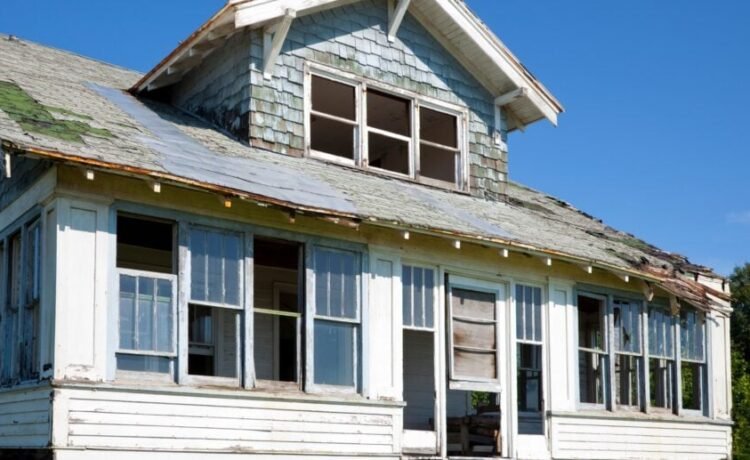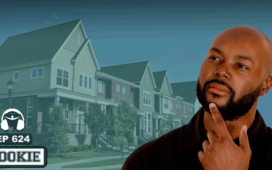With high interest rates and stubbornly high home prices still plaguing the real estate market, buying a fixer-upper has become one of the few ways to acquire a home below market value with the potential to add sweat equity. Whether you choose to live in the property yourself or flip it for a profit, knowing which markets are likely to give you the most bang for your renovation bucks is crucial.
Fortunately, a recent study from Mad City Windows & Baths has done the number-crunching by analyzing fixer-upper home listings in 50 of the largest U.S. cities. The study examined the overall median home price in each city, the cost of homes in relation to local incomes, and the speed of sale in each market, utilizing data from Redfin, the Federal Reserve Bank of St. Louis (FRED), and the U.S. Census Bureau.
Dovetailing with this study, ATTOM’s year-end 2024 U.S. Home Flipping Report noted a decrease in the number of houses being flipped. However, for flippers who chose the right markets, profits were at 29.6%, albeit the third-lowest level recorded since 2008.
The importance of choosing your market wisely was highlighted by The New York Times article, “U.S. Homes Are Not Selling, and Prices Continue to Rise.”
Every market has its pros and cons. Take a look at the entire list mentioned in the Mad City report, as homes stretch across the nation. Flipping a house from a distance is never easy, so if you intend to sell a fixer-upper for a profit, find one with an easy commute.
Key Factors to Consider When Buying a Fixer-Upper
- Home price-to-repair cost ratio: The ideal scenario for a fixer-upper for most investors or homebuyers is a city with affordable home prices and reasonable repair costs, which rules out pricey major cities like New York or Los Angeles, despite the potential profit being much higher in high-value metros.
- An appreciating market: Cities with strong potential for property value appreciation offer a greater return on investment once the renovation is complete. This is particularly important for flippers.
- Availability of skilled labor: A house flipper can live and die by their choice of contractor. A shortage of skilled labor can be fatal to a project, especially when money has been borrowed to complete the flip.
- Demand for housing: This is specifically applicable to house flippers—you need to choose a market where there is a high demand for housing.
- Access to cash: Assuming you’re not sitting on a trust fund, having access to reliable, reasonably priced purchase and renovation loans to fund your flip is crucial.
Best Cities to Buy a Fixer-Upper
Here’s an in-depth look at some of the cities where your flipping dollars can go further.
St. Louis, MO: Low-cost purchase and renovations
Price is one of the key factors that places St. Louis atop Mad City’s list. The median income is $55,279, and the annual salary is just $20,960 required to buy a fixer-upper, resulting in a 62% surplus, making this imminently doable for many people in the state.
According to the Federal Reserve Bank of St. Louis, the unemployment rate is 5% as of June, reflecting a recent increase and slightly higher than the national average of 4.1% in the same period. According to Redfin, the median selling price for a home is $260,000 as of June, which is substantially below the national average of $446,766. However, the New York Times speculates that the recent immigration crackdown could disrupt the city’s heavily immigrant, burgeoning business population.
Detroit, MI: Affordable housing, rising investment, high demand
Detroit is another highly affordable city that’s been on the rise for some time. Once plagued by high vacancy rates, crime, and widespread abandonment, the Mad City study shows renovation costs in Detroit are considerably lower than in many other major cities, which can make it an excellent market for investors.
The downtown and midtown areas have undergone considerable economic revitalization, with investment by major car companies such as General Motors and Ford, as well as big tech companies like Microsoft, Alphabet’s Google, and Quicken Loans.
However, there is still poverty and blighted areas, and Detroit still has a long way to go. Still, if you’re looking for a flip with low entry and exit points, as the Mad City report highlights, many fixer-uppers require under $20,000 in household income to qualify to buy, compared to a citywide median income of $39,575, resulting in a 55.5% surplus.
“Now, homes that are renovated sell in two or three weeks,” Austin Black II, a real estate agent, told the New York Times in October.
Oklahoma City, OK: Low entry point, job growth, and population growth
Oklahoma City is another city with low acquisition costs—median prices are around $180,000–$200,000, according to the Mad City report. It’s on an upswing, with job growth expected to be around 3%, as population growth is projected to be around 2%, according to Rentastic.
And with a median household income at $66,702 and an income needed for a fixer-upper at $33,200, according to Mad City, that means a surplus of around 50%.
ATTOM Data Solutions’ fixer-upper report calculates that house flippers in Oklahoma can expect to make an average gross flipping profit of $55,000. Meanwhile, Houzeo suggests the potential profit margin in Oklahoma City could be considerably higher.
Pittsburgh, PA: Job demand, affordability, rising prices
Pittsburgh has enjoyed a few golden years for flippers thanks to its affordable housing and steady job demand from skilled workers in healthcare, tech, and finance. However, the market has tightened recently due to competition from multiple flippers. And the recently introduced, more stringent wholesaling laws in Pennsylvania could bring back more fluidity.
With a median home price for fixer-uppers of $132,450 and a household income needed to buy one of $35,000, according to the Mad City report, the metrics needed to buy a fixer-upper are still in Pittsburgh’s favor.
Buffalo, NY: Tech boom, investments, high demand
Buffalo is a shining example of a city that could. In January, Zillow named the snowy metro on the Canadian border as the nation’s hottest real estate market for the second year in a row. Buffalo has experienced an influx of new jobs thanks to a tech explosion, which is expected to boost employment in the sector by 7% (from 2022) by 2032, according to Innovation & Tech Today.
The city has attracted over $22.6 billion in investments. Federal funding of $40 million, to be shared between neighboring Rochester and Syracuse, is intended to support their tech ecosystems, according to Nu Camp.
With a median sale price of $243,408 and 66.3% of houses selling for over the listing price, house prices up by 2.8% this year, with only nine median days on the market until going into contract, according to Zillow, Buffalo is a great place to flip houses—assuming you can stave off the competition.
Final Thoughts
Low-cost fixer-upper markets aren’t the markets where houses will sell the fastest. According to the Mad City report, those markets are Boston, Richmond, VA; Riverside, CA; and Salt Lake City, UT. However, they are pricier than others, so they require investors with deeper pockets and inherently carry more risk if the flips don’t go according to plan.
In a tight market, it’s better to offset your risks by buying lower-cost affordable homes that you can sell at a price point that appeals to budget-conscious buyers or can enable you to cash flow should you choose to rent it out, or provide sweat equity if you choose to live in it.















